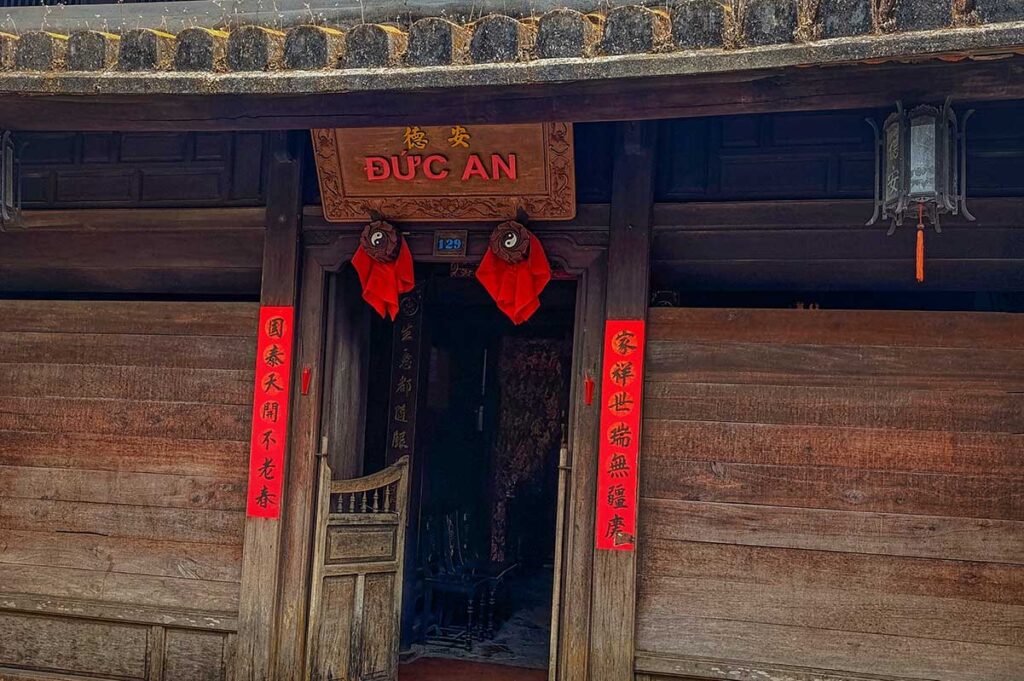What is Duc An Old House?
Duc An Old House is located at 129 Tran Phu Street, right in the heart of Hoi An Ancient Town. Built in 1830 during the reign of Emperor Minh Mang, it has been home to the Phan family for eight generations and is still privately inhabited today. The name “Duc An” means “virtue and peace,” reflecting the family’s Confucian values.
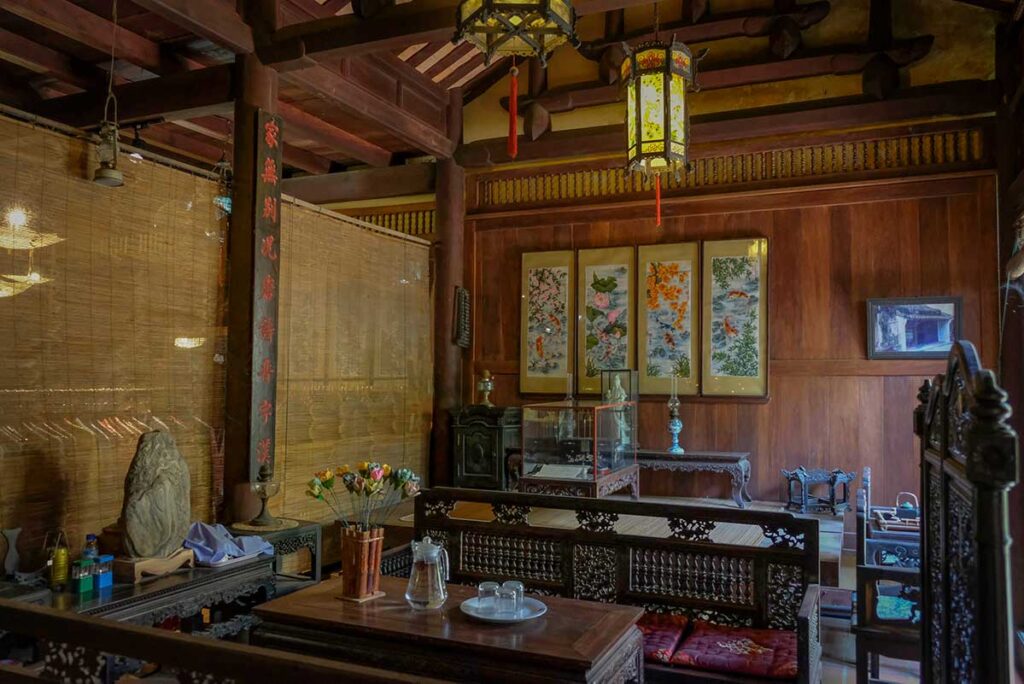
The house is part of the Hoi An Ancient Town ticket system and counts as one of the five sights included with your entry pass. It stands out not only for its well-preserved architecture but also for its important role in Vietnam’s revolutionary past.
History of Duc An Old House
Duc An Old House began as a family residence and business, functioning as both a pharmacy and a bookstore in the late 19th century. The house became a hub for progressive thought, attracting prominent Vietnamese patriots like Phan Chu Trinh, Huynh Thuc Khang, and Tran Quy Cap, who gathered here to read and discuss political ideas.
In the early 1900s, Duc An served as a key location for anti-French resistance efforts, hosting secret meetings and spreading revolutionary materials. In 1927, it became the meeting place for the formation of the Vietnam Revolutionary Youth League, which later evolved into the Communist Party of Vietnam.
Because of its role in the independence movement, the house is now recognized as a national historical site—a rare example where personal and political history intersect in a preserved heritage home.
Architecture & layout
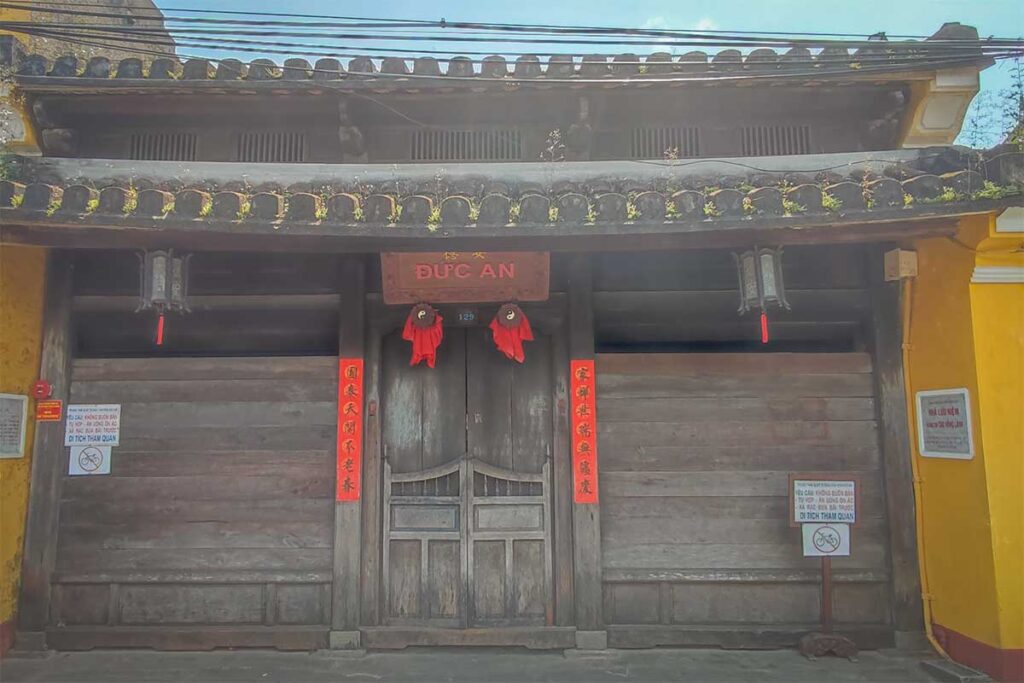
Duc An Old House follows the traditional Vietnamese tube house style—long, narrow, and deep—designed for both living and commerce. The architecture blends Vietnamese and Chinese elements, with brick walls, a yin-yang tiled roof, and exposed wooden beams throughout.
The house is divided into functional sections:
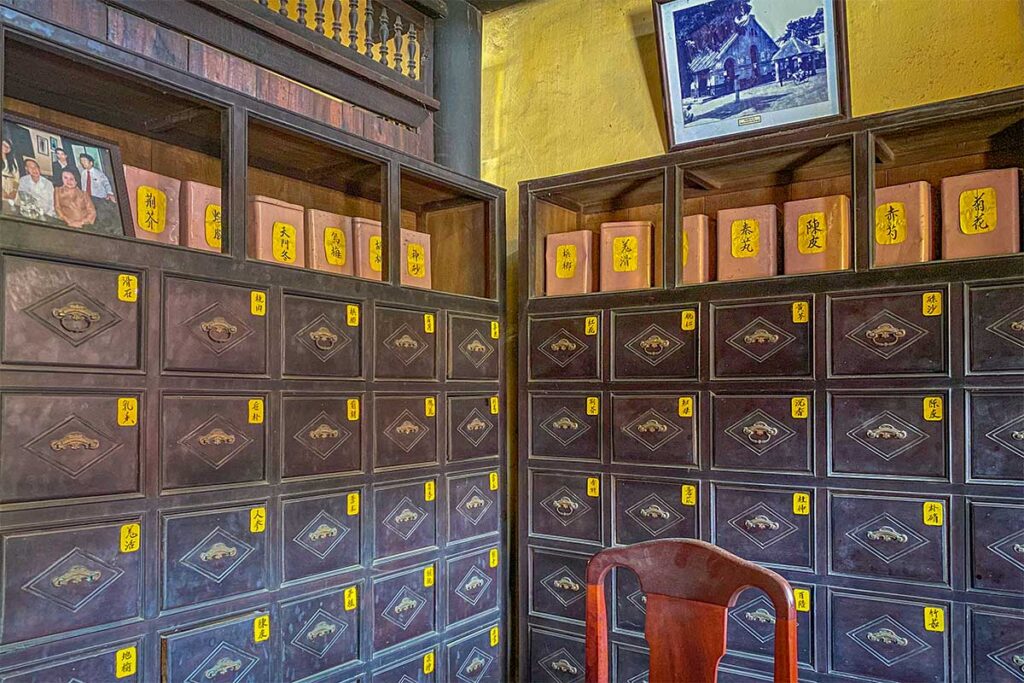
Front Room – Once used as a bookstore and herbal medicine shop, now displaying old medicine cabinets, bookshelves, and remnants of its trading past.
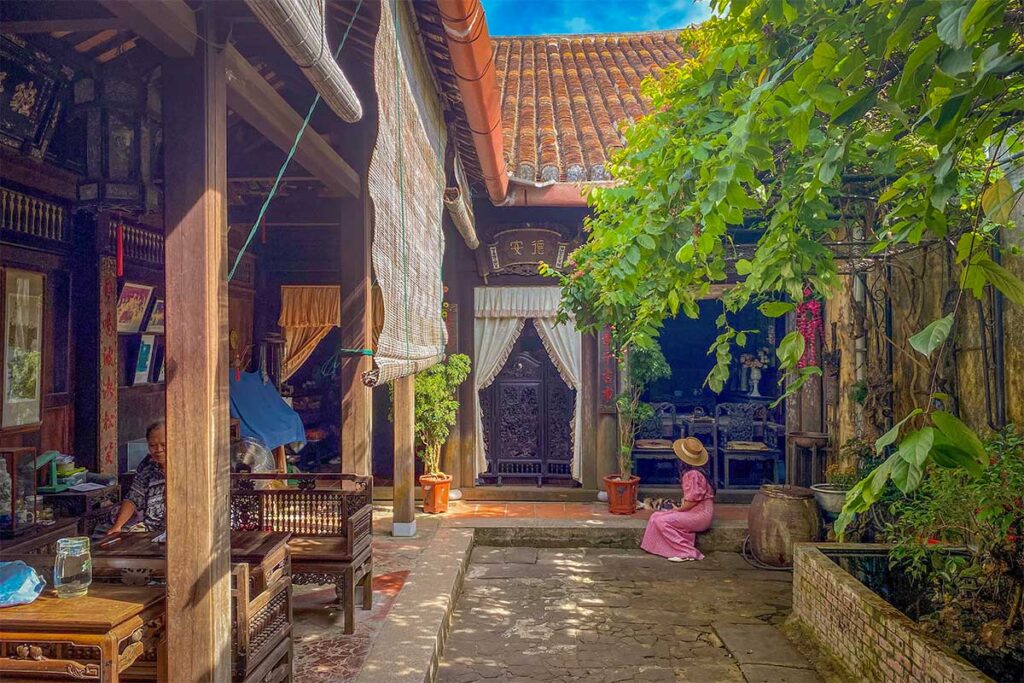
Middle Courtyard – An open-air space that provides natural light and ventilation, a common feature in Hoi An merchant homes.
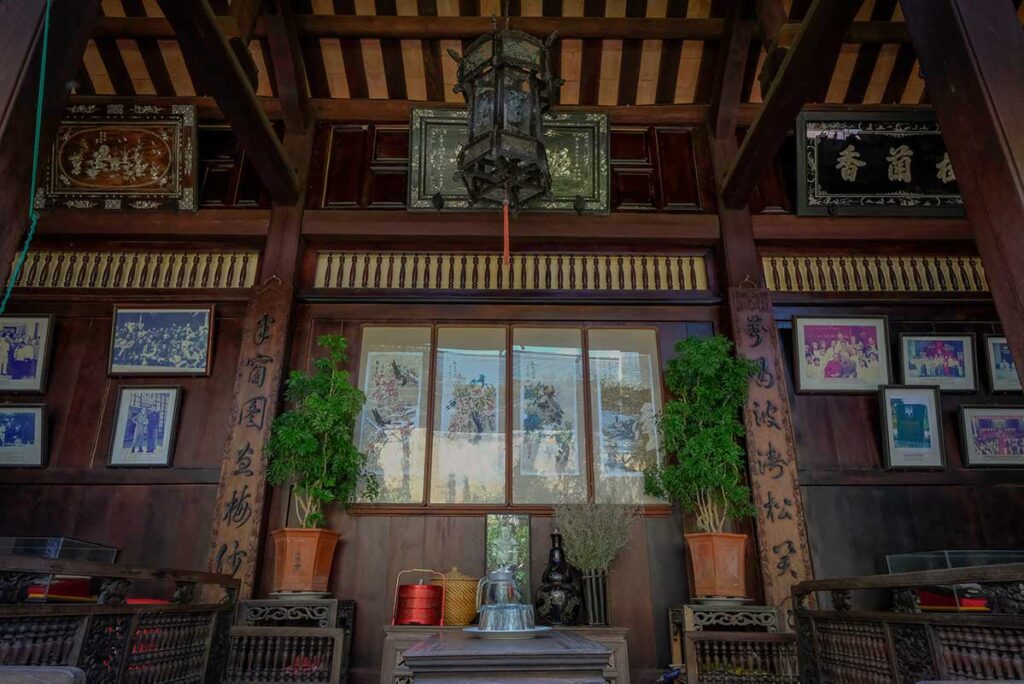
Rear Living Quarters – Includes the family altar, old furniture, and worship space, reflecting the Confucian values of the Phan family.
The roof features a unique stacked beam system, allowing overlapping tiles and airflow while keeping the house cool. Decorations include calligraphy, ancestral photos, and carefully preserved antiques, offering a lived-in feel that adds to the authenticity.
What to see inside
A visit to Duc An Old House offers a mix of historical artifacts and lived-in charm:
- Heritage Displays – You’ll find herbal medicine cabinets, antique bookcases, and original furniture that reflect the home’s past as both a family residence and a bookstore. The Phan family altar remains intact, preserving the ancestral worship tradition.
- Open Courtyard – The central courtyard provides a glimpse into traditional house design, with natural light and airflow creating a peaceful, airy atmosphere.
- Historical Memorabilia – Scattered throughout are items related to Vietnam’s independence movement, including family photos and materials referencing Duc An’s political role.
- Resident Interaction – Depending on timing and mood, the current resident may share stories about the house, its history, or his family. Some visitors find this adds a personal touch—others have mixed experiences.
- Everyday Details – The presence of a family cat, signs of daily life, and the home’s natural wear give the space a unique authenticity that sets it apart from more polished museum-style houses.
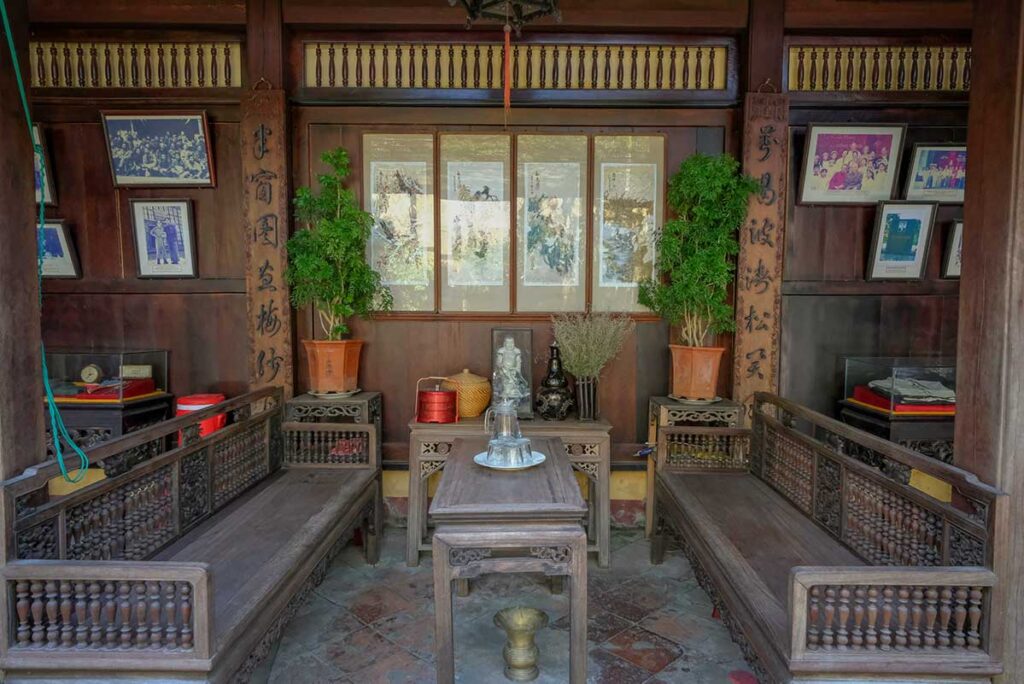
Visiting information
Location
129 Tran Phu Street, right in the heart of Hoi An Ancient Town.
Getting there
Easily reached on foot or by bicycle if you’re staying nearby. No motor vehicles allowed inside the Ancient Town.
Opening Hours
Typically open daily from 8:00 AM to 9:00 PM.
Entry fee
Access is included in the Hoi An Ancient Town ticket (120,000 VND for 5 selected sites).
Tips
- The house is still actively lived in, so maintain a respectful tone—you’re stepping into someone’s home.
- The owner may engage in conversation or appear less friendly, depending on timing and crowd levels.
- Do not bring drinks inside—some visitors have had negative experiences due to this.
- Best times to visit are early morning or late afternoon, when it’s quieter and less hot.
- Keep expectations realistic—this isn’t a curated museum, but a historical home with personal touches and wear.
Is it worth visiting?
Duc An Old House is a great choice if you’re interested in Vietnam’s political history or want to see a more personal, lived-in heritage home. It’s quieter and less commercial than places like Phung Hung or Tan Ky, offering a different, more authentic experience. The historical stories and artifacts add depth, especially for those curious about revolutionary figures like Phan Chu Trinh.
If you’re trying to choose between the old houses, Tan Ky is more polished and architecturally impressive, but Duc An holds unique historical value that might make it more meaningful for some visitors.
